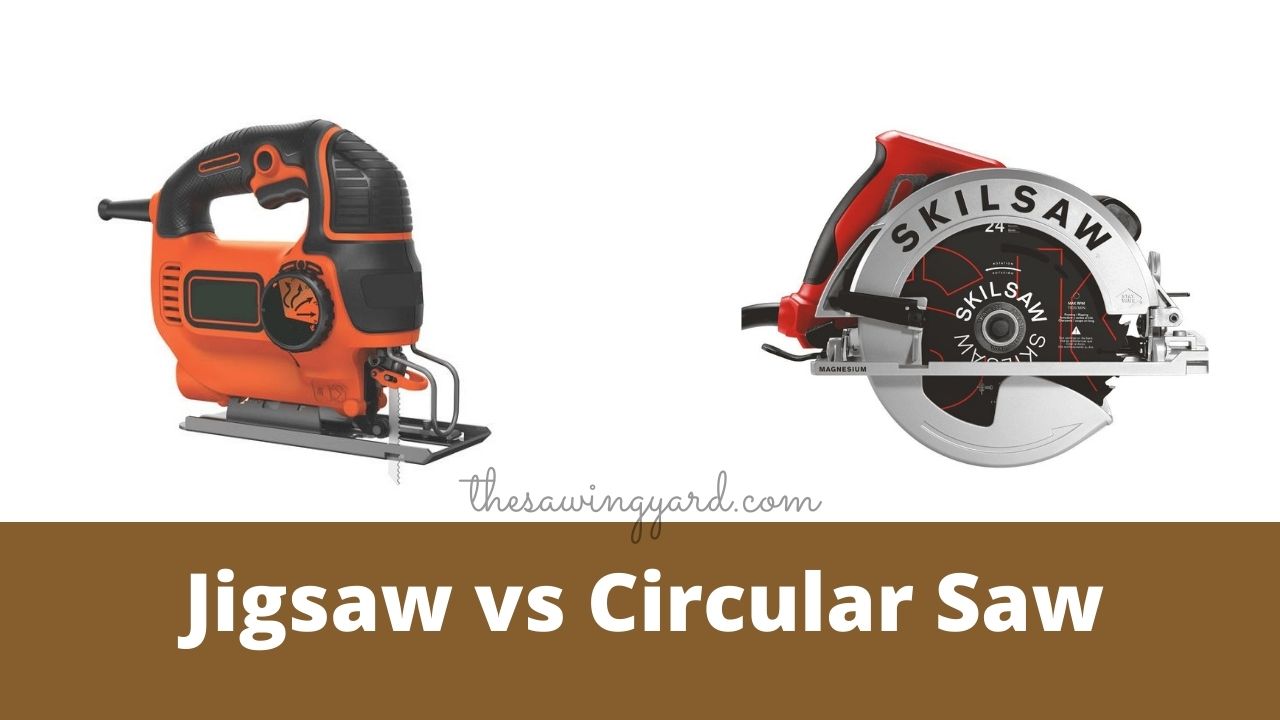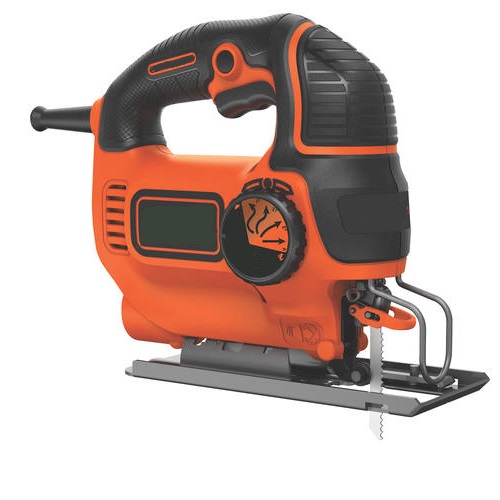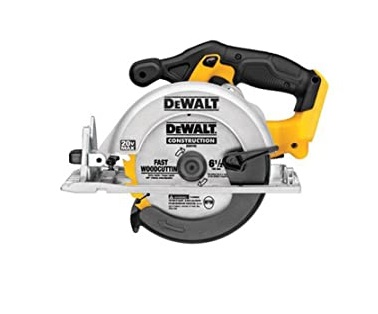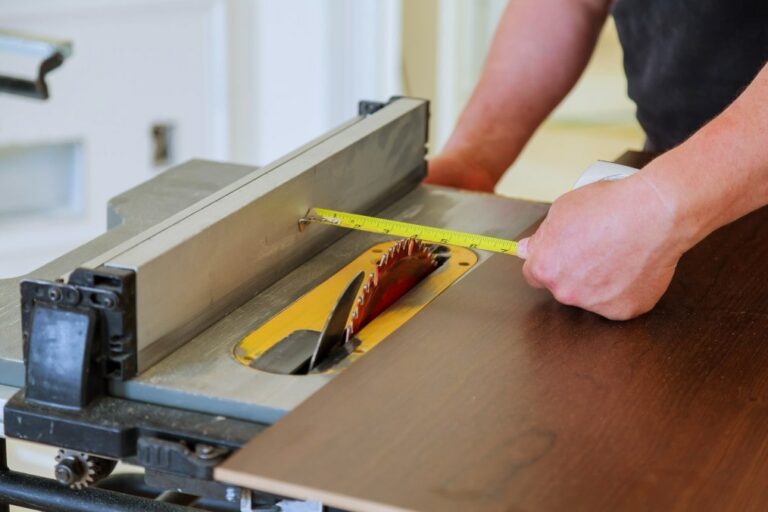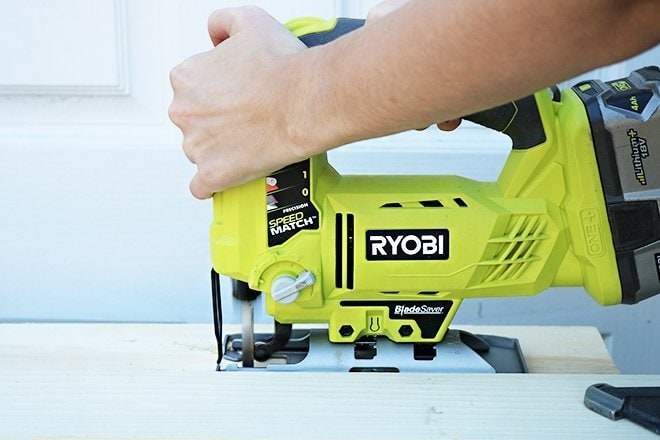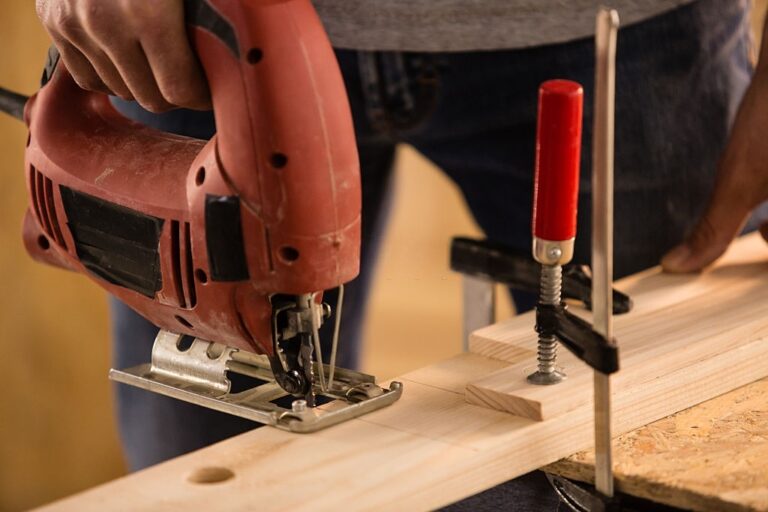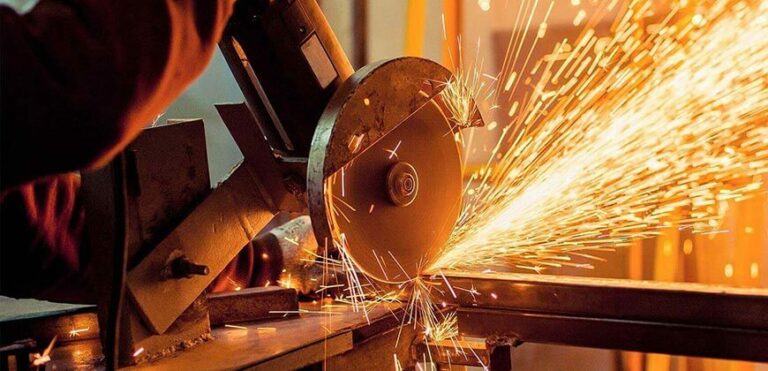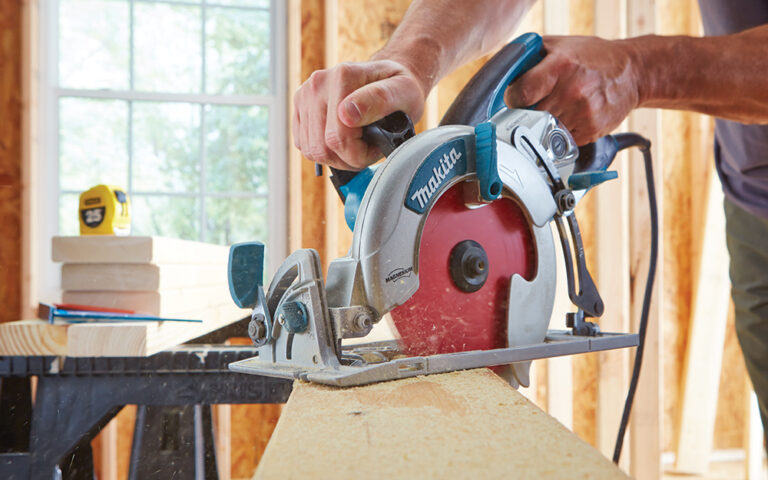Whether you’re a new DIYer or an experienced professional woodworker, a power tool is a must-have gadget for your workstation. These power tools will assist you with your project and make the job a lot easier. We’re sure most woodworkers understand the importance of power tools. But sometimes, it can be tiresome to pick between some particular types. And when it comes to saws, multiple saw types can be used for the same purpose.
Jigsaws and Circular saws are two of the most popular power tools in the DIY industry. And in most cases, people remain confused about picking one out of these two. Although they look a lot different, both the tools offer similar functionality, but they are used for different situations. We’re here to help you understand the differences between both these saws.
A jigsaw is a powered tool used for curved and more intense or detailed cuts. It works on up and down motion and can handle various types of woodworking projects. On the other hand, a circular saw is another powered tool used to cut heavy woods in a straight line. It comes with a circular blade that rotates quickly to get your projects done. Here, we’ll discuss some factors you should consider when picking between a jigsaw vs circular saw that’ll help you determine the perfect saw for your woodworking needs.
What are Jigsaws?
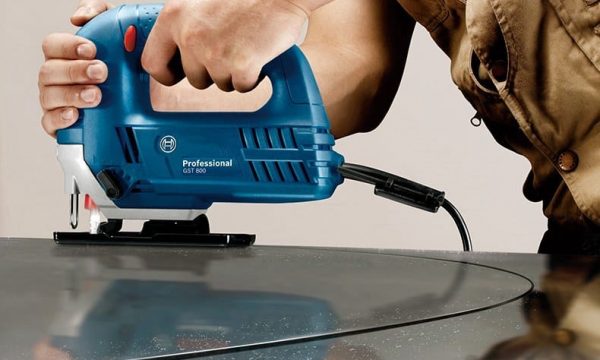
The first jigsaw was invented by an engineer named Albert Kaufmann, working for a Swiss company in 1946. And since then, the evolution of these saws goes on-trend. A typical jigsaw makes use of a long thin blade, which is the reason behind its popularity. This blade looks similar to a dentated/toothed blade. Jigsaw works on the mechanism of quick up and down motion, making it capable of doing a wide variety of DIY tasks.
Jigsaws are one of the most versatile types of saw because of their capability to cut an array of materials. This capability depends on the model you’re using and the blade equipped with it. Usually, some common materials that a jigsaw can handle are wood, plastics, metals, and ceramic tiles. This tool stands out as the priority for the woodworkers demanding curved cuts.
They are available in both corded and cordless options. Corded jigsaws require electricity supply, whereas cordless models are battery-operated. Buyers can opt for any model based on their preferences. Generally, these models are portable and handheld, but you can mount some of them. Certain projects do not permit your tool to make any sudden movement. In such cases, mounting a jigsaw is essential to keep it stationary.
This saw is associated with an array of unique features. Some of its core features are blade, motor, and stroke length. Apart from this, some convenient features like LED light and laser guide enhance the user’s cutting experience.
The weakness of this saw is its much thinner blade, which is prone to damage. But this is not the case with just jigsaw; every saw faces the same problem over time. Every tool is associated with some limitations, but that doesn’t mean it cannot do the job. Find out some of the best jigsaws in the market in our detailed buying guide.
Pros:
- It is a versatile tool capable of making a variety of different cuts.
- This tool is also capable of making plunge cuts as well.
- Most of the jigsaws have a compact and lightweight design.
- It can cut wood, plastic, metal, ceramic, and many other materials.
- Setting up a jigsaw is very easy and takes no time.
Cons:
- The blades are a bit thin.
Our Recommendation for Jigsaw
Top Pick
BLACK+DECKER Electric Jigsaw
Great Value at a Budget
BLACK+DECKER’s affordable electric jigsaw comes with a 5-amp motor that can deliver more than 3000 strokes per minute.
Buy on AmazonIf you’re a beginner, check out the basics of using a jigsaw:
What are Circular Saws?
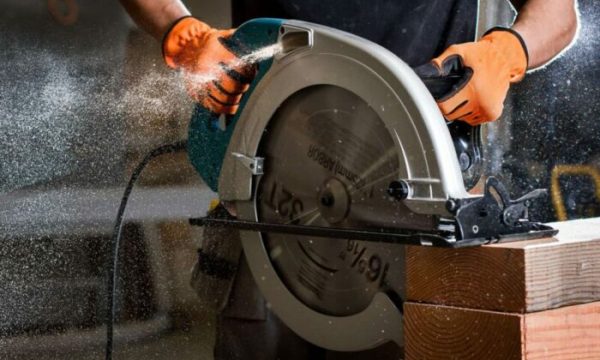
A Circular Saw, also known as Buzzsaw, was invented before the jigsaw in the late 1800s. It’s very popular among the people who’ve been working with wood for a longer time. They’re also available in both options: corded and cordless. Circular saws generate higher power that helps them to cut through different materials with incredible ease.
It uses a circular, toothed blade to cut the materials. The blade of the circular saw rotates at a very high speed, which helps in producing smooth and straight cuts. These circular blades are available in different sizes; each size contains a different number of teeth. Most commonly, a circular saw comprises a 24-tooth blade (7-1/4 inches model), but there are blades available with 50 or 60 teeth if the buyer demands. These blades are more robust than jigsaw’s blade and are available in different configurations. Even these blades can break, but the chances are less when compared with other saws.
Woodworkers prefer to use circular saws for making plunge cuts, angle cuts, bevel cuts, and a lot more. This saw will help you with all the thick materials, including wood, metal, masonry, pipes, and sheet materials. You can perform similar jobs with the help of a jigsaw, but the effectiveness and quality of the cuts are determined by the blade equipped. However, when it comes to curved cuts, then a circular saw may not help you.
Circular saws are available in two varieties: a handheld model, which is highly portable, and a mountable model that is more powerful. Handheld circular saws are ideal for residential and small commercial areas whereas, mounting saws are perfect for your workshops.
Pros:
- These are known for making more accurate, precise, and faster cuts.
- It can cut through wood, pipes, masonry, metal, and other materials.
- A competent tool for creating smooth straight cuts.
- Higher blade rotating speed.
Cons:
- You need some experience to work with circular saws.
- Using this saw for curved cuts is not ideal.
Our Recommendation for Circular Saw
Top Pick
Dewalt 20V Cordless Circular Saw
Best battery-powered and durable circular saw
A powerful cordless circular saw with a 6.5-inch blade capable of delivering more than 5,000 RPM.
Buy on AmazonDifference Between Jigsaw vs Circular Saw
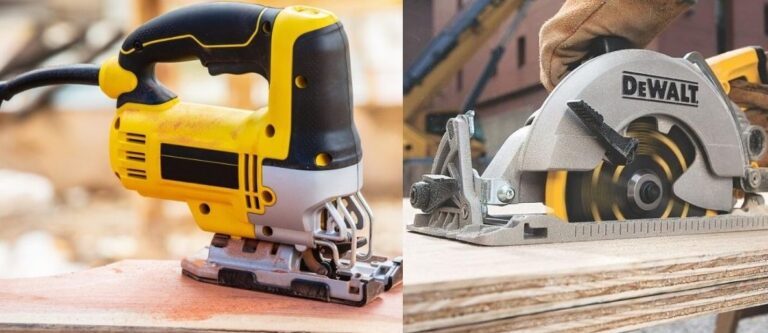
Design
The design of a jigsaw is similar to a sewing machine. The blade stands perpendicular to the saw and operates in a rapid up and down motion. This saw features a uniquely designed shoe where the saw rests, allowing it to make bevel and pivot at different angles. It is useful when woodworkers need to make detailed or complicated cuts.
On the other side, a circular saw consists of a circular disc that rotates at a super high speed to make smooth straight cuts. These saws are also designed with a laser guide that promotes precise cuttings. It also includes a blade guard that covers the blade while it’s not operating.
Operation
Jigsaw is a handy power tool that is extremely easy to use. Its blade is small in size and packed securely, making it a compact-sized tool for woodworkers. And compact devices are always known for their smooth and safe operation. This is the reason why jigsaws are very popular among beginners and occasional DIYers.
Circular saws are bulkier than jigsaws; hence, they require more practice to make their operation smooth. If you’re not serious while working with circular saws, then you may end up with an injury. However, it becomes a lot easier to use circular saws if you have prior woodworking experience.
Cutting Materials
Different materials require different saws with particular blades for the best results. With the help of a jigsaw, users can cut through wood, plastics, metal sheets, ceramic, laminate, softwood, and many more. Just remember to get yourself the right blade to use with the tool.
As discussed earlier, a circular saw generally comes with a 24-tooth blade, but you can also find a model with more blade teeth. With the standard 24-tooth blade, you can cut through various materials, including metals, woods, pipes, and much more. You can use a circular saw equipped with a 50-60 teeth blade disc for cutting through hard materials like masonry and more.
Types of Cuts
Both the saws are counted in the list of versatile tools that can make various types of cuts. A jigsaw allows woodworkers to make bevel, miter, plunge, and compound cuts. In most cases, people use it for intricate cuts and crosscuts as well. A circular saw is useful for straight, long, rough beveled rips, angled, plunge, and many more cuts. However, the cutting capabilities and performance are also dependent on the model you’re using.
Size
If you want to know whether your saw is easy to handle or not, you need to know its size. However, jigsaws and circular saws are handy tools, so it becomes essential to consider the size. Jigsaw is a clear winner as most models are lightweight and compact. Moreover, they are highly portable, due to which it becomes easier for DIYers to carry and store their tool.
On the other hand, circular saws are relatively heavier as they are designed with a powerful motor and thicker blades. However, it’s possible to find some compact circular saws which are portable and provide satisfactory results.
Final Verdict
We can’t declare a single saw as the winner. Jigsaws and circular saws are both designed for specific projects requiring particular cuts. So, if you own both the tools, it would be somewhat more convenient. But if you’re a budget buyer looking for a single tool, then the mentioned factors will help you finalize your decision.
Conclusively, jigsaws are recommended if you’ve to make intricate, curvy, and delicate cuts. In comparison, circular saws are helpful when the requirement is for long, straight, and plunge cuts. We hope our jigsaw vs circular saw guide helped you with your research. Make sure you use all the safety equipment while working with these saws.
- Best Benchtop Bandsaw Reviews of 2022 – Buying Guide - February 11, 2022
- How to Use a Jigsaw Properly – Beginner’s Guide - October 25, 2021
- How to Cut a Square Hole in Wood using DIY Tools - October 9, 2021

